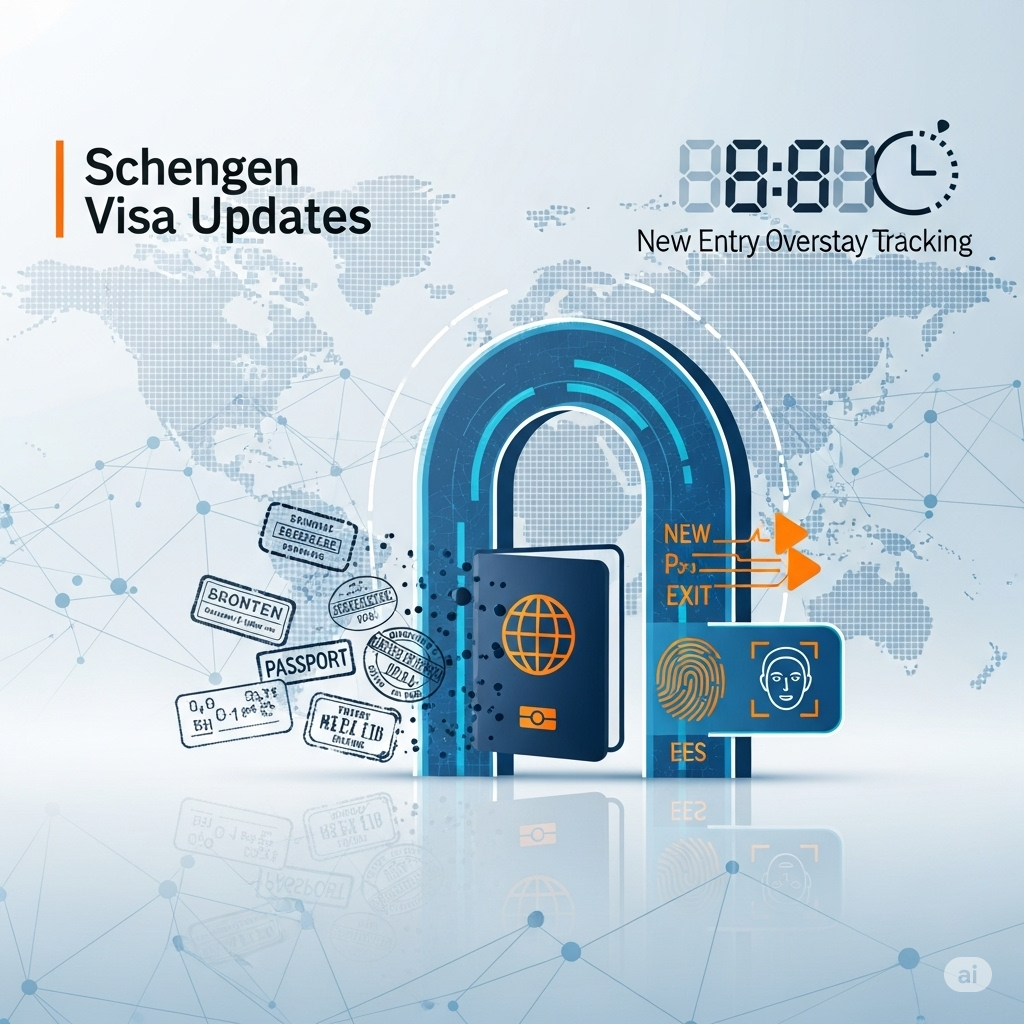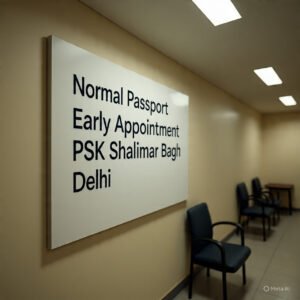The allure of Europe, with its rich history, diverse cultures, and breathtaking landscapes, draws millions of travelers each year. For many, the journey begins with the Schengen visa, a gateway to seamless travel across 27 European countries. However, the regulations and processes surrounding Schengen visas are continuously evolving, requiring prospective travelers to stay informed about the latest changes. Recent updates are impacting application procedures, eligibility criteria, and the overall travel experience within the Schengen Area. This article provides a comprehensive overview of the most significant Schengen visa updates, helping you navigate the application process with greater clarity and confidence.
Understanding these changes is crucial for individuals planning trips for tourism, business, or other purposes, ensuring a smoother and hassle-free experience when applying for a Schengen visa. From new technological implementations at borders to specific adjustments in document requirements by member states, these updates reflect an ongoing effort to balance security with facilitating legitimate travel.
Table of Contents
The Upcoming EU Entry/Exit System (EES): A Technological Shift at Schengen Borders
One of the most significant upcoming changes is the implementation of the European Union’s Entry/Exit System (EES). Initially slated for launch in 2024, the system is now expected to be fully operational by April 2026. The EES represents a major technological shift in how the EU manages its external borders. It is an automated IT system designed to register the entry and exit of travelers from non-EU countries who are traveling for a short stay (i.e., maximum 90 days in any 180-day period).
Currently, border guards manually stamp passports upon entry and exit. The EES will replace this process by electronically recording the name, type of travel document, biometric data (fingerprints and facial image), and the date and place of entry and exit of third-country nationals.
Key Features and Implications of the EES:
- Biometric Data Collection: The collection of fingerprints and facial images will be mandatory for most non-EU travelers. This is intended to enhance security and prevent identity fraud.
- Automated Border Checks: The system aims to speed up border checks for legitimate travelers by automating the recording process.
- Overstay Tracking: The EES will automatically calculate the allowed length of stay, making it easier to identify over-stayers. This is a crucial aspect of maintaining the integrity of the Schengen visa regulations.
- Impact on Travelers: First-time travelers to the Schengen Area after the EES implementation will likely experience slightly longer processing times at border controls due to the initial biometric data capture. However, subsequent entries should be faster.
- Data Privacy Concerns: The collection and storage of biometric data have raised some data privacy concerns. EU authorities emphasize that the EES will comply with strict data protection regulations.
Recent Adjustments in Member State Requirements: The Case of Switzerland
Individual Schengen member states also periodically update their specific requirements and procedures for visa applications submitted through their consulates. A recent example highlights the importance of paying close attention to these country-specific rules. Switzerland, a popular Schengen destination, has recently updated its Schengen visa rules for Indian applicants
According to the updated guidelines, the Swiss consulates in India are now strictly accepting only the documents listed on their official checklist. Applicants are advised not to include any additional, unrequested paperwork, as this could potentially lead to delays or even rejection of the visa application. This stricter adherence to the defined list of required documents underscores the need for applicants to:
- Consult the Official Website: Always refer to the official website of the specific Schengen country’s embassy or consulate in their country of residence for the most up-to-date list of required documents and application procedures.
- Prepare Documents Carefully: Ensure that all required documents are complete, accurate, and meet the specified format.
- Avoid Unnecessary Documents: Do not include any documents that are not explicitly requested, as this could complicate the application process.
This example from Switzerland serves as a reminder that while the basic Schengen visa framework is common across member states, specific implementation details and document requirements can vary. Travelers planning to visit a particular Schengen country should prioritize checking the latest guidelines issued by that nation’s diplomatic missions.
The Evolving Landscape of Visa Application Centers and Outsourcing
Many Schengen countries outsource their visa application processes to third-party service providers like VFS Global and TLScontact. These centers act as intermediaries, accepting applications and supporting documents on behalf of the consulates. Travelers need to be aware of any changes in the operational procedures or locations of these visa application centers.
Recent trends indicate a greater emphasis on online appointment booking and the submission of digitized documents where possible. Applicants should regularly check the websites of the relevant visa application centers for the latest information on appointment scheduling, application submission guidelines, and any new service fees that may apply. Delays in appointment availability at these centers have been reported in the past, especially during peak travel seasons, so early planning and booking are highly recommended.
Potential Future Changes and Considerations
The Schengen visa policy is a dynamic area, and further changes are always possible in response to evolving geopolitical situations, security concerns, and technological advancements. Some potential future developments could include:
- Digitalization of the Visa Application Process: A move towards a fully online Schengen visa application process, including the submission of digital documents and potentially even remote biometric data capture.
- Updates to Visa Fees: Periodic reviews and potential adjustments to Schengen visa fees.
- Revised Visa Codes: Amendments to the Schengen Visa Code that could impact eligibility criteria, visa validity periods, or the processing of specific visa categories.
- Integration with Other EU Travel Authorization Systems: Potential future integration with systems like the European Travel Information and Authorisation System (ETIAS), which is expected to become a requirement for visa-exempt non-EU nationals.
Staying informed about these potential future developments will help frequent travelers to the Schengen Area anticipate and prepare for any upcoming changes.
FAQ Section
Q1: What is the Schengen Area?
A: The Schengen Area is a zone comprising 27 European countries that have abolished passport and other types of border control at their mutual borders. It functions as a single jurisdiction for international travel purposes, with a common visa policy.
Q2: What is the Entry/Exit System (EES) and how will it affect travelers?
A: The Entry/Exit System (EES) is a new automated IT system that will register the entry and exit of non-EU travelers to the Schengen Area. It will replace passport stamping with electronic recording of biometric data. First-time travelers may experience slightly longer checks initially, but subsequent entries should be faster. It also aims to improve security and track overstays.
Q3: Where can I find the most up-to-date information on Schengen visa requirements for a specific country?
A: The most reliable source for up-to-date information is the official website of the embassy or consulate of the specific Schengen country you plan to visit, located in your country of residence.
Q4: What should I do if the visa application center asks for documents not listed on the official embassy website?
A: You should always prioritize the document checklist provided on the official website of the embassy or consulate. If the visa application center requests additional documents, it is advisable to double-check with the embassy or consulate directly for clarification.
Disclaimer
This article provides general information about Schengen visa updates. Visa regulations are subject to change, and specific requirements may vary depending on your nationality, travel purpose, and the Schengen member state you plan to visit. Always consult the official websites of the relevant embassies or consulates for the most accurate and up-to-date information. This article does not constitute legal or immigration advice.
Affiliate Disclosure
This article may contain affiliate links to travel-related services or resources. If you click on these links and make a purchase, we may earn a small commission at no extra cost to you. This helps support our efforts to provide informative content. Consider using a reputable flight and hotel booking platform like Skyscanner.com for your travel needs within the Schengen Area.







